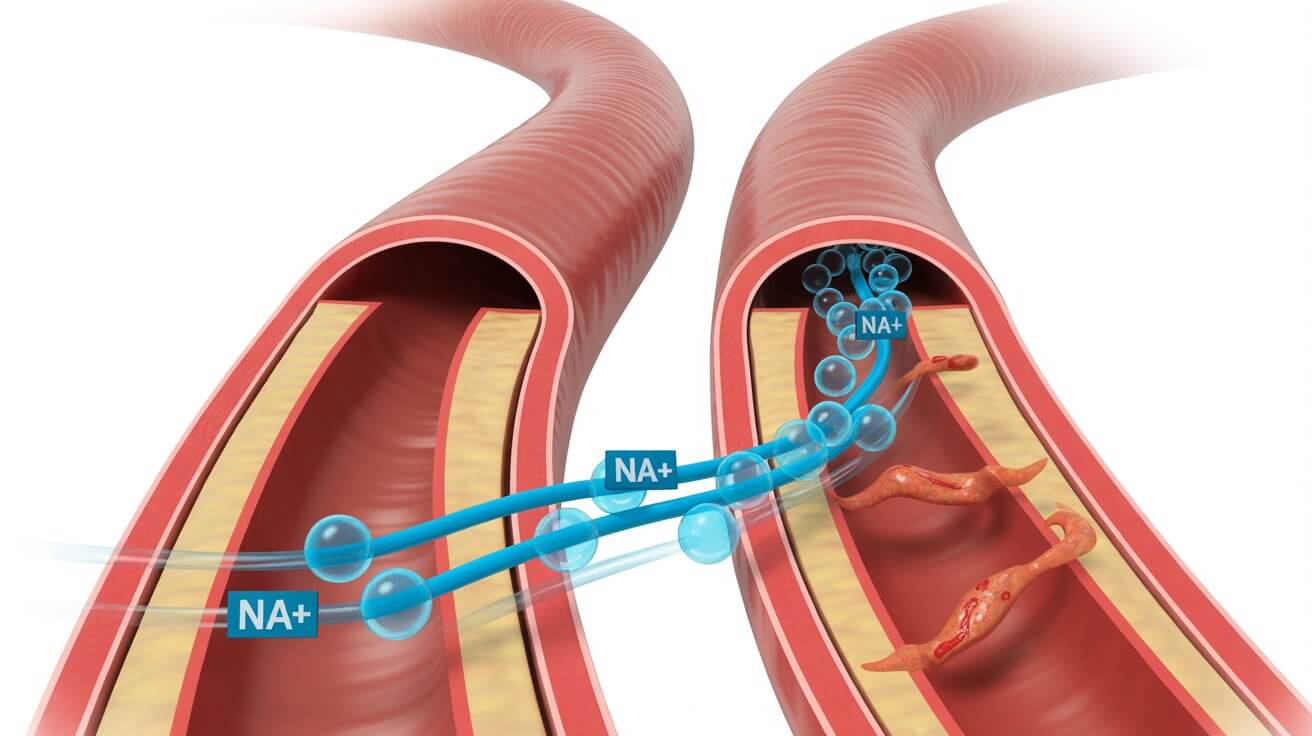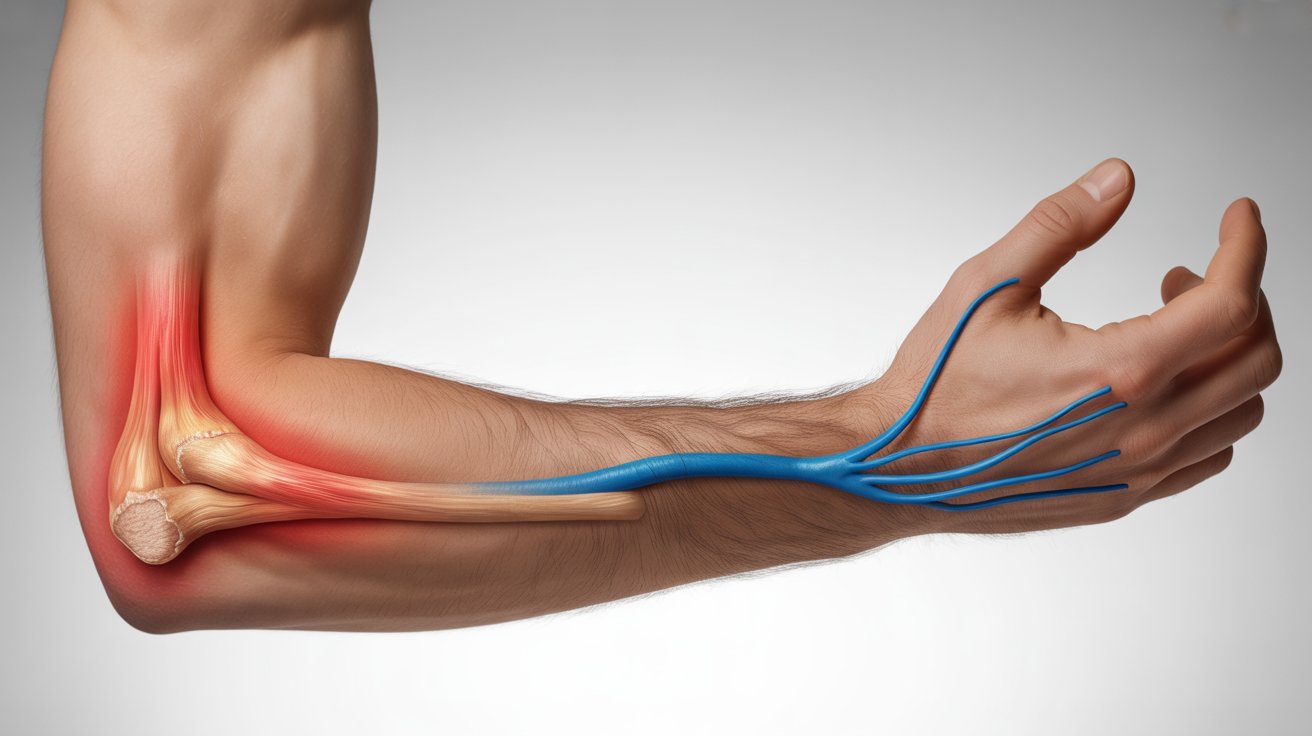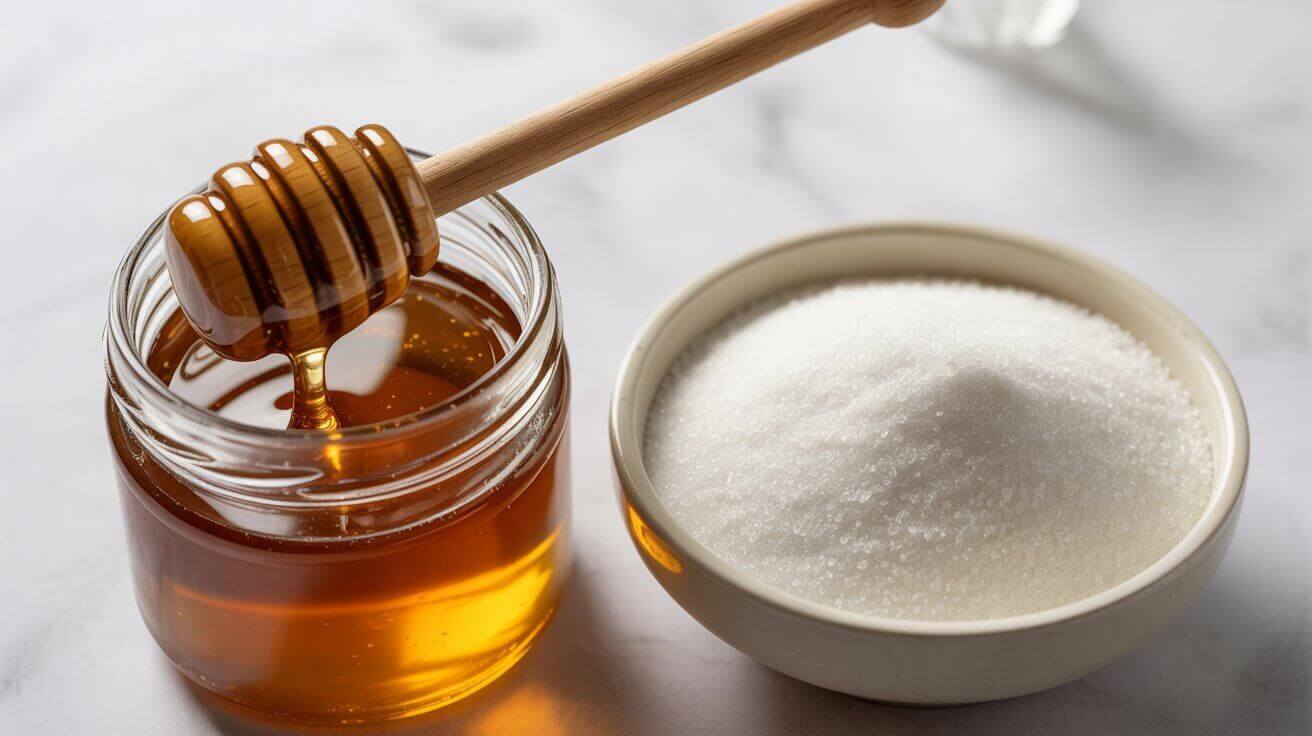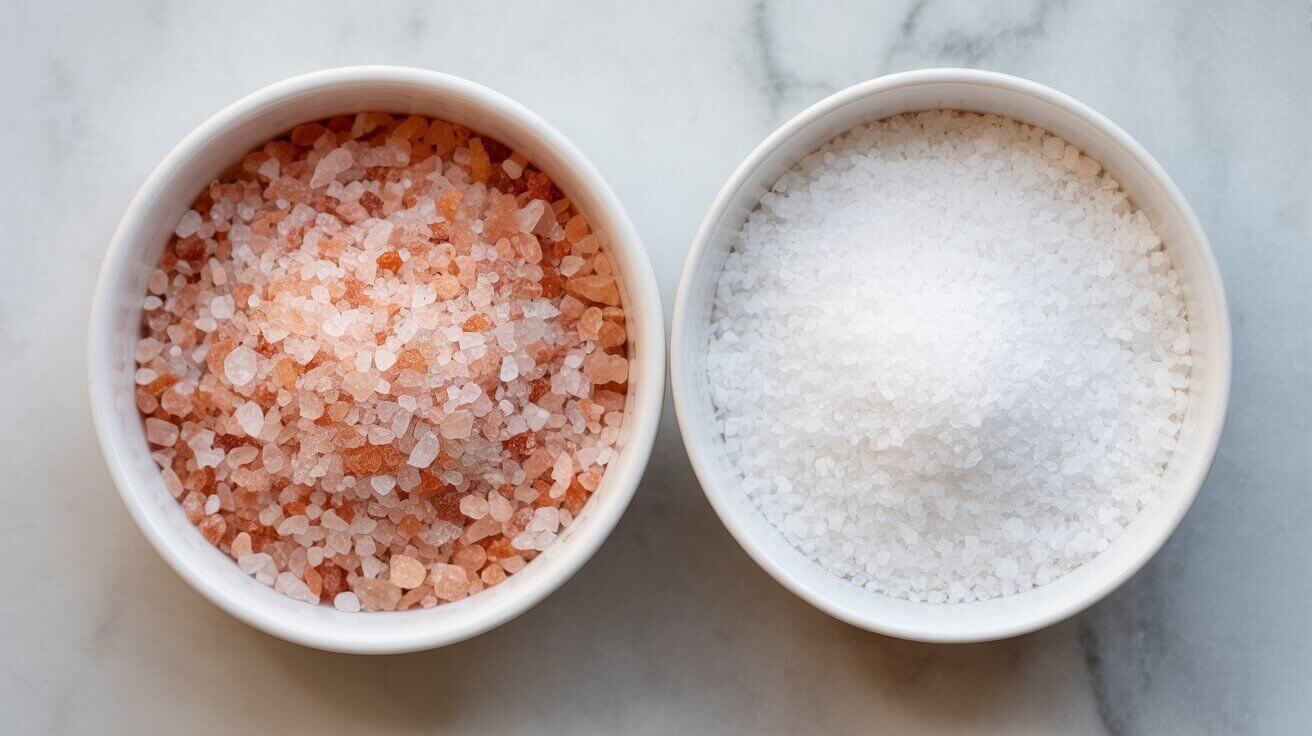Most people have experienced it: a salty meal that tastes great in the moment but leaves the body feeling puffy, thirsty, or just slightly “off.” What many don’t see is what’s happening deep inside the arteries as sodium levels rise. The effects are subtle at first, but they shape long-term artery and heart health in powerful ways.
Salt has been part of the human diet for thousands of years, yet modern eating patterns deliver far more sodium than the body was built to handle. Understanding what salt does to your arteries makes it easier to see why some people react quickly—and why others show changes only when blood pressure readings begin climbing.
Why Too Much Salt Affects the Body
How the Body Normally Balances Sodium
The body works constantly to keep sodium in a narrow, healthy range. Sodium helps nerves fire, muscles contract, and fluids stay in the right places.
The kidneys act as gatekeepers: when someone eats more salt than needed, healthy kidneys flush out the excess to maintain balance.
What Changes When Salt Intake Climbs
Trouble begins when sodium repeatedly climbs beyond what the kidneys can comfortably clear—a common result of restaurant meals, packaged foods, and fast snacks.
When sodium rises, water follows it into the bloodstream, increasing blood volume. This extra volume raises blood pressure and increases force against artery walls.
More Helpful Reads You Might Like:
What Excess Sodium Does Inside Your Arteries
1. Sodium and Blood Pressure Changes
Too much salt causes the bloodstream to hold onto more fluid. As blood volume increases, pressure rises, stretching the arteries—especially large ones near the heart.
For sodium-sensitive individuals, these changes are more pronounced and can raise blood pressure quickly.
2. Why Salt Can Stiffen Artery Walls
Over time, arteries repeatedly exposed to pressure changes can become less flexible. Instead of expanding smoothly with each heartbeat, they stiffen.
Research shows that high sodium intake may change the cells inside artery walls, affecting how they relax and contract.
When arteries stiffen, the heart must pump harder, linking excess sodium with long-term cardiovascular strain.
3. Inflammation and Long-Term Effects
The impact isn’t only mechanical. Higher sodium levels may influence inflammation inside artery walls and alter immune cell behavior.
Over years, this can contribute to:
- arterial thickening
- loss of elasticity
- potential progression toward atherosclerosis
Not everyone experiences these effects equally. Genetics, kidney function, medications, stress, and diet all influence sodium sensitivity.
Signs You May Be Sensitive to Too Much Salt
Short-Term Symptoms
Some individuals feel the effects within hours of a high-salt meal:
- increased thirst
- mild swelling (fingers, ankles, eyes)
- temporary rise in blood pressure
- headaches
- bloating or heaviness
These signs don’t necessarily indicate danger, but they can signal the body struggling to balance sodium.
When to Talk to a Clinician
People with kidney disease, high blood pressure, or heart conditions often experience stronger effects from sodium.
Anyone noticing repeated swelling, headaches after salty meals, or rising blood pressure may benefit from professional guidance.
Practical Ways to Reduce the Effects of High Sodium
Simple, Sustainable Daily Strategies
- Cook at home using fresh ingredients
- Rinse canned vegetables, beans, and tuna
- Choose low-sodium versions of pantry staples
- Use herbs, citrus, and spices instead of extra salt
- Eat more potassium-rich fruits and vegetables
How to Read Labels Without Stress
Sodium adds up quickly, especially in packaged foods like soups, sauces, and deli meats.
Most adults are advised to aim for about 2,300 mg of sodium per day, or less if blood pressure is a concern.
What to Do After a Salty Meal
- Drink water throughout the day
- Eat potassium-rich foods (bananas, oranges, beans, sweet potatoes)
- Take a walk to help move excess fluid
- Avoid another high-sodium meal the same day
These steps won’t reverse the internal effects immediately, but they help the body rebalance.
The Bottom Line
Salt itself isn’t harmful—it’s essential. The problem comes from how much sodium modern diets contain.
When someone regularly eats too much salt, the arteries feel the impact long before symptoms appear. Fluid retention, rising blood pressure, arterial stiffness, and subtle inflammation all play a role in long-term cardiovascular health.
Small, steady changes can reduce strain on the arteries without eliminating favorite foods. Understanding what happens inside the body makes those choices easier.
Frequently Asked Questions
Does eating too much salt affect your arteries right away?
Some people feel symptoms within hours, but internal artery changes usually develop over time.
Can too much salt cause inflammation in blood vessels?
Yes. Research suggests sodium can influence immune cells inside artery walls and contribute to inflammatory changes.
How long does it take your body to recover from a salty meal?
Most people rebalance within 24–48 hours with hydration, potassium, and lighter meals.
What is sodium sensitivity?
It’s when a person’s blood pressure rises more sharply in response to sodium intake.
Can reducing salt improve artery stiffness?
Gradual reductions in sodium may help lower blood pressure and improve artery function over time.
Medical Disclaimer: This content is for educational purposes only and does not replace professional medical advice, diagnosis, or treatment. Always consult your physician or a qualified healthcare provider with any questions about a medical condition.
Sources & Further Reading
- Ellison DH, Linas S, Pohl M. “Insights into sodium handling and blood pressure.” New England Journal of Medicine. 2021
- Youssef GS. “Salt and hypertension: current views.” E-Journal of Cardiology Practice. 2022
- Surma S et al. “High salt intake and atherosclerosis progression.” Nutrients. 2025
- CDC – Sodium and food sources
- Mayo Clinic – Sodium: How to tame your salt habit








